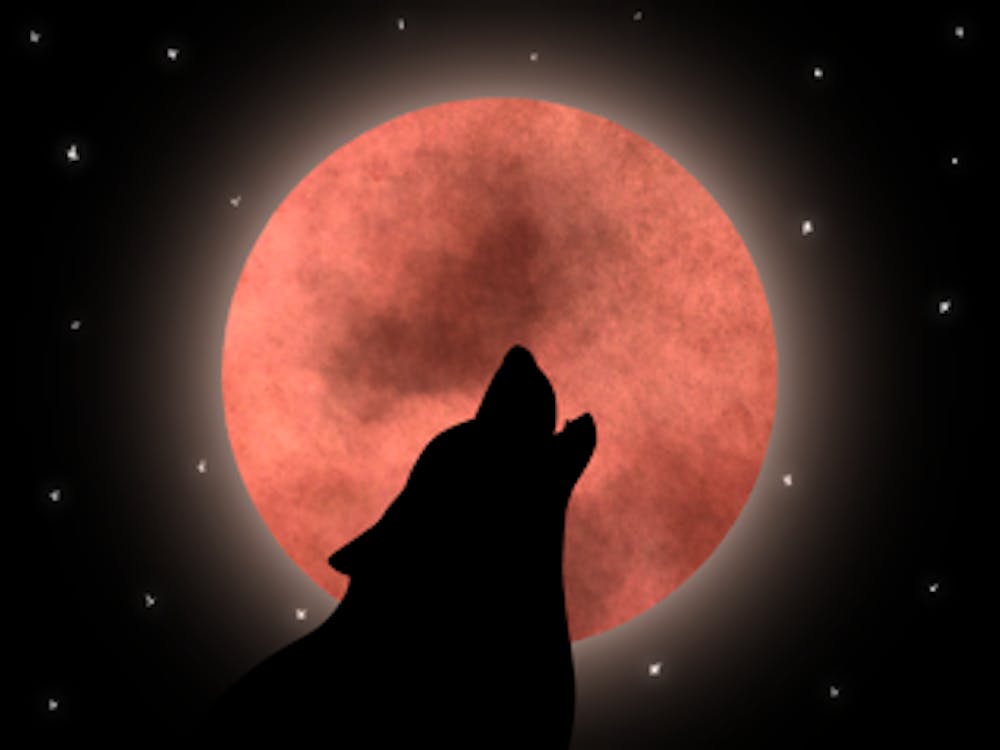The super blood wolf moon is coming.
A supermoon occurs when the moon is at its closest to the Earth, making it appear larger than usual. A blood moon describes the reddish color the moon takes on during a lunar eclipse. A wolf moon describes the first full moon of the calendar year.
Next week, those three lunar phenomena will combine into a super blood wolf moon, which will be visable late Sunday night until early Monday morning, IU astronomy professor Caty Pilachowski said.
“Each of those pieces – the super, the full, and the blood and the wolf are all tied together,” Pilachowski said.
Folk and religious beliefs surround the astronomical phenomena.
Blood moon
As the sun’s light curves around the sides of the Earth, the moon turns red. This is where a blood moon gets its name, Pilachowski said.
Kristina Downs, managing editor for the Journal of Folklore Research at IU, said contemporary neopagans associate the blood moon with power and danger.
“It’s a time of transition or a time of things coming together,” Downs said.
Mayan culture sees lunar eclipses as a big cat taking a bite out of the moon or devouring the moon entirely, she said. The Mayan people also associate the moon with a woman and believe a woman would die when a blood moon occurs.
Aboriginal Australians believed the opposite. They believed blood moons were a sign a man would die, most likely one on a journey, Downs said.
Downs said the moon seemingly turning to blood was a sign of the end times in Christian theology, so some people believe that event is a lunar eclipse.
“Every time there’s a blood moon, you’ll hear someone saying the end times are upon us,” she said.
Supermoon
A supermoon occurs when the moon’s orbit is closer to the Earth and appears slightly larger to the untrained eye, said Jack Theising, a senior and president of the IU Astronomy Club.
Wolf moon
A wolf moon is the first full moon of the calendar year. There are multiple theories as to why the name wolf moon arose but no universally accepted explanation, Downs said.
It may have come from Native American tribes, but Downs cautioned against accepting this as simple fact.
While Downs said it is very possible the wolf moon originated from many Native American cultures revolving around a lunar calendar, she said that is overgeneralizing these culture.
Another possible explanation, Downs said, was the frequency of wolves in January. In the middle of winter in the past, wolves would venture near human settlements looking for food. The upticks in wolf sightings may have contributed to its name.
Super blood wolf moon
This was an important part of people’s lives long ago, Pilachowski said, and is still important today. The fascination lay in the novelty of the event.
“They were unusual events,” Pilachowski said. “They were scary events. The natural order of things seem to be out of whack.”
Theising said he is looking forward to the eclipse from a researcher’s perspective but also from the perspective of someone who loves the stars.
“One of the reasons that I went into astronomy, not the main reason, but one of the reasons was because you just look at the stars, and it’s breathtaking,” he said. “Some people call astronomy the oldest science because everyone enjoys observing the stars.”






